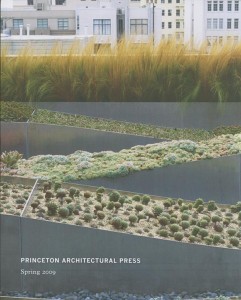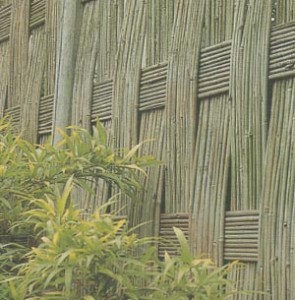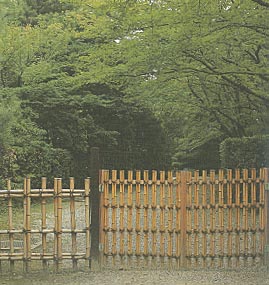Linda brought by my desk the 2009 Spring catalog of the Princeton Architectural Press. She really like the photo on the cover, a planting by Andrea Cochran, a San Francisco-based landscape architect and the subject of a new book, Andrea Chochran: Landscapes, which is just about to be published. (The project shown is the Ivy Street Roof Terrace Hayes Valley Roof Garden in San Francisco.)
You may recall that Linda is a quilter, and the cover design really looks quilt-like in the way it’s put together: blocks of different plantings (not just blocks of single kinds of plants), all assembled together so that one grouping of plants contrasts dramatically against another, like one patterned fabric in a quilt that’s been set against another. In fact the author of of the book describes Cochan’s work as “studies in repetition and order, orchestrations of movement in the landscape, and elements placed in geometric conversation”–which almost sounds like the principles operating behind many quilts.
Check out Andrea Cochran’s website for other examples of her strong, linear landscape designs.
Thumbing through the catalog I ran across another title that made me stop for a closer look, Bamboo Fences, by Isao Yoshikawa and Osamu Suzuki. The catalog says that the book “provides a detailed look at the complex art of bamboo fence design in Japan, presenting these unique structures in over 250 photographs and line drawings. From the widely used ‘four-eyed fence’ (yotsume-gaki) and the fine ‘raincoat fence’ (mino-gaki) to the expensive ‘spicebush fence’ (kuromoji-gaki), these exquisite designs impress with their simple beauty, providing plenty of inspiration for your own bamboo fence.
“Author Isao Yoshikawa gives a brief overview of the history of bamboo fence building in Japan and classifies the different designs by type. A glossary provides explanation of Japanese fence names and structural terms.”
Of course, fences like this probably wouldn’t work so well if your house is in the Tudor or Spanish taste. Unless of course you want your home to develop a “home store Gothic” look that one writer called the look that suburban houses accrue over time as their owners buy whatever strikes their fancy at the local Home Depot, historical accuracy and style be damned.
But imagine these around a clean-lined modern house. In fact, Richard Neutra was known to like his glass-walled homes to look out on a Japanese-styled landscape. And some of the more geometric versions might even look amazing behind a landscape designed the the subject of the first book….
Above: Images from the book, photographed by Osamu Suzuki.







Those fences are amazing. I love the way the bottom one has rails that seem to float along the length of the fence. Wondering if there is an “X” on the otherside to help position it or if it really just floats along. Very cool.
I love the lines in the bottom picture, and the colour of those stems / trunks behind
K
Hi James,
What a beautiful post. I enjoyed looking at her website. I loved the images of the bamboo fences. Great book recommendations.
Best regards,
Philip
Mary Ann, Karen, Philip–I’m glad you enjoyed the fences. They’re so refreshing compared to most fences I’ve seen. And as for the fence floating in front of the bamboo grove, that one’s so poetic for me, the fallen and cut timber placed next to bamboo in the full flush of growth, before and after. The construction details all look effortless, hidden from view as they are.
And Philip–I think that Andrea Cochran’s work is a fresh take on modern landscape design that respects its living materials better than most.
James, what a fascinating couple of items. The bamboo fences are as elegant as they can be. Indeed, “the fence” gets pretty boring locally. So much repetitious sameness between the modern tracts gives more an appearance of conformity than of expression. That’s almost bizarre, since I have encountered so many people who are fundamentally creative inside the fences. (Having said that, I know some who paid elaborate attention to their fences, to which one must tip their hat hugely.)
Andrea Cochran is simply a visionary designer. The ability to create life from straight planes and hard, spare angles is an incredible gift. It opens the mind and represents an “art” in the truest sense. Very cool post, James, thanks!